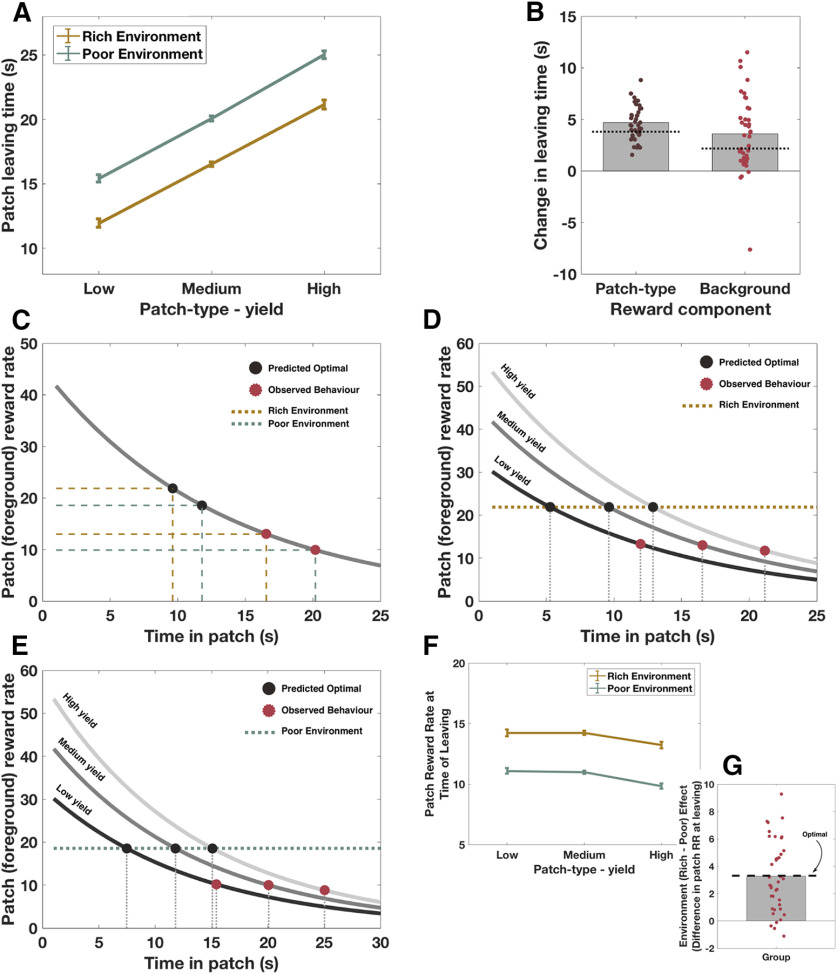Figure 2.
Healthy human foragers are guided by MVT principles. A, Raw patch-leaving times. Participants (N = 39) left patches later when the background environment was poor, compared with rich (p < 0.00001), and when patches had higher, compared with lower yields (p < 0.00001), with no interaction between patch type and background environment (p = 0.2). B, These effects of changing reward parameters were in the predicted direction, with participants leaving on average 4.7 s later as patch type varied, and 3.6 s later in poor compared with rich environments. There was more variation between individuals in the effects of changing background, compared with foreground, reward rates. Dashed lines indicate predicted (MVT) effects of changing reward rate on leaving time. C–E, Participants showed a bias to remain in patches longer than predicted by MVT. Mean leaving time for each environment, collapsed across patch type, is shown in C, whereas D and E demonstrate mean leaving times for each patch type in the rich and poor environments, respectively. F, The foreground (patch) reward rate at which participants chose to leave each patch varied as a function of background environmental richness (rich vs poor). G, The magnitude of this background environment effect was close to optimal (as predicted by MVT). Error bars indicate ± SEM.

